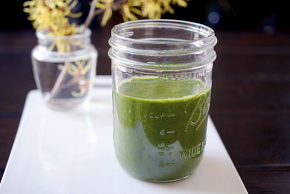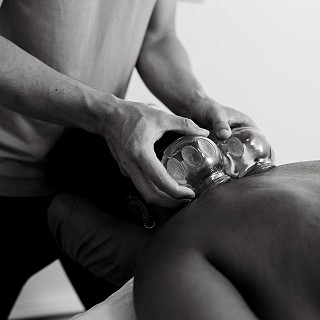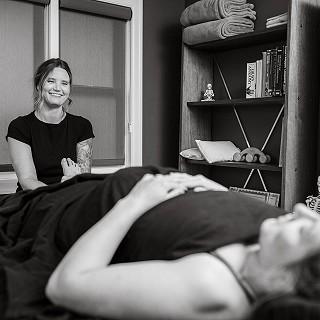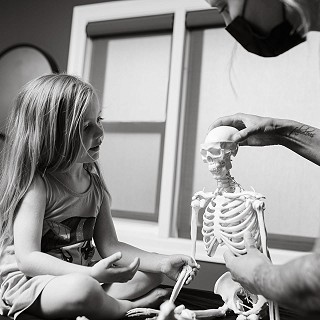7 Simple Ways to Get More Greens in Your Diet
Green vegetables are loaded with protein (100 calories of romaine lettuce has 7.2 grams) and contain a cornucopia of micronutrients, including folate, carotenoids such as lutein and zeaxanthin (which promote healthy vision), calcium, and omega-3 fatty acids. Some leafy greens, like kale, watercress, collards, arugula, and bok choy, belong to the cruciferous family of vegetables whose unique nutrients such as isothiocyanates have been shown to be some of the most powerful cancer fighters in existence.1
Blending and Juicing
Don’t like chomping down on greens for what seems like endless periods of time? Drink them instead. Blending your greens into a smoothie or making a cold-pressed juice with primarily vegetables (and a small amount of fruit, if necessary) helps to increase the bioavailability of beneficial micronutrients by breaking down the walls of plant cells, a feat that chewing alone might not accomplish adequately.
Breakfast Scrambles
If you’re making a big egg or tofu scramble, add in some chopped spinach, kale, or collards towards the end of the cooking process. You’ll be starting your day with a nice portion of greens, with plenty of fiber and protein to keep you full for a long time.
Stews, Chilis, and Soups
Just like with a scramble, you can easily add chopped greens to any one-pot meal you’re making. Greens can also be blended into the base of soups, which accomplishes the same goal of increasing nutrient absorption just as smoothies do.
Sauces, Either Chopped or Blended
Greens also work well in savory sauces. Blend spinach into your fresh pesto sauce or add any kind of leafy greens to a tomato-based sauce. For sake of convenience, it’s useful to always keep a bag of frozen chopped greens on hand to toss into a sauce as it’s heating up.
Noodles and Pasta
If you’re making pasta (hopefully whole grain), add some greens into the boiling pasta water three minutes before the noodles are al dente, then drain and continue to prepare as normal. Not only have you boosted the micronutrient content of your pasta dish, you’ve also reduced the caloric density of the meal.
Collards in Place of Tortillas
Next time you make a wrap of burrito, grab some of the biggest collard green leaves you can find. First, trim the hard stems off the bottoms, and then blanch them in boiling water for one minute. Remove the leaves from the boiling water and dry them off. You’ve now got the most nutrient-dense tortilla on the planet.
Burger Patties or Meatballs
Whether you’re making a burger or meatballs out of beans, beef, or turkey, you can add some chopped spinach to the mixture as well. It might not amount to a huge portion of greens, but any time you can add more greens to a dish, it’s worth doing.
By incorporating any or all of these tips into your daily routine, you’ll end up flooding your body with the most beneficial disease-fighting nutrients possible in some of the least noticeable ways. So give some of the above techniques a try this week and let us know how it goes.
Spring Glowing Green Smoothie

Ingredients
- 1 cup filtered or spring water
- 3 cups chopped spinach
- 1 cup chopped baby spring mix
- 2 cups chopped mango
- ½ banana
- 1 Tbs. fresh lime juice
Instructions
- Add the water, spinach and baby spring mix to the blender. Starting the blender on a low speed, blend until smooth.
- Gradually moving to higher speeds, add the mango, banana and lime juice, and blend until smooth.
- Enjoy!
Serves: 24 ounces
Constructive Rest

Lying down in Constructive Rest is one of the quickest and simplest ways to restore our natural shape, and can be invaluable for people suffering from neck or back pain. By taking the time to lie down for just a few minutes once or twice a day you will:
- allow muscles and joints to release excess tension.
- take pressure off the spine, allowing displaced spinal fluid to be – reabsorbed, easing compression and giving you back your full height.
- become calmer as you take time away from the stresses of the day.
- allow your breathing to become more regular.
- give your digestive system time to release.
- regain energy and ease for life in the upright.
When should I lie down?
At least once every day! Although any time of day is helpful as suits your schedule, the best time for most people is early afternoon, so as to give your body a chance to restore itself before the second half of the day begins. It can also be valuable to make time to lie in the balanced resting state before and/or after participating in any strenuous or stressful activity (such as giving a presentation or doing some gardening).
How long should I lie down?
Lying down for 10 to 20 minutes will be most beneficial at least once or twice a day. If, however, five minutes is all you can do, the benefits will still be valuable.
How do I lie down in Constructive Rest?
- First find a quiet, warm, carpeted floor space where you can lie down undisturbed.
- Place a small pile of books under your head for support – this should be high enough to stop your head pulling back, but not so high that your chin is pushed toward your chest, constricting your throat.
- Bend your knees so they point up toward the ceiling, with your feet flat on the floor about shoulder-width apart.
- Let your hands rest on your abdomen, fingers released and elbows out to the side, allowing width in your upper body. Aim to be almost completely passive physically.
- During your lie down be aware of the ground supporting your back, allowing your shoulders to rest as your back widens and your whole body lengthens and expands.
- As you move back into your daily activities, notice your body’s regained ease and expansion.
Tips
If your head feels uncomfortable on the book/s, make the top softer with a wad of tissues or a folded scarf. Let your eyes remain open, at least for some of your time lying down, so this can be a time for building greater awareness of your body and surroundings. If you start to feel drowsy (aim to have at least a few minutes of awareness with your eyes open), turn your toes inward and let your knees fall together so the legs don’t flop. If your lower back is painful, it can be particularly helpful to support the lower legs on a low piece of furniture or rest the knees over a pillow. This way the legs can rest completely and allow the lower back to relax. If you are uncomfortable with your hands resting on your abdomen, you can either let them rest by your side, elbows slightly bent and palms down, or you can extend your arms out to the side almost level with your shoulders, palms facing upward.





